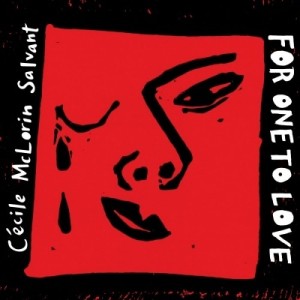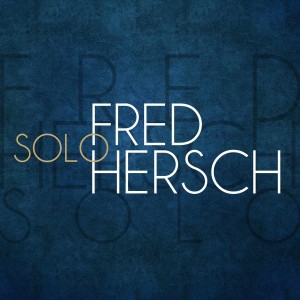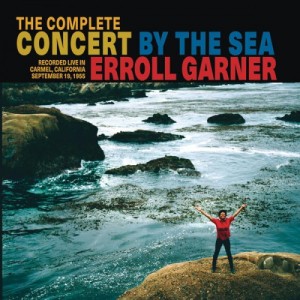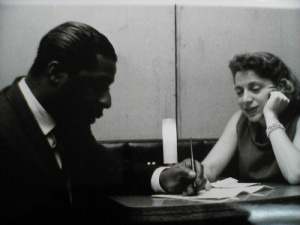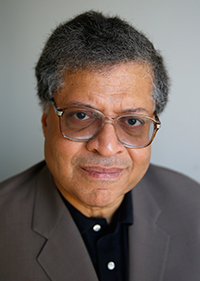Yeah, yeah, whatever…
But if all that’s true, then why, I keep asking every year, is there so much good-to-great “product” (a euphemism I loathe, but am stringing along, hoping it’ll take the hint from the diminishing effect of quote marks) that still comes out? Why is it that I made up this year’s list thinking that there were so many discs I could have easily included that didn’t even make the Honorable Mention cut? Why is it that any of the top five on this list could have easily been number one and why could any of the ones below them, even the Honorable Mentions, could have slipped into the top five?
Why? Why ask why?
An answer — not “the” answer — is that whatever infrastructure that used to be in place for promoting and marketing music is in worse shape than some of our bridges, tunnels and highways. In fact, there might not even BE an infrastructure so much as a make-it-up-as-we-go-along system that spreads and circulates the word on artists and “product.”
Or not. I don’t know, really. As with everybody else who still cares, I go with my gut. And what my gut tells me is that jazz, whether God likes it or not, is finding a way to move along on its own power regardless of who’s noticing at this point. And my top five especially give me hope that the music is not just moving along or getting by, but transforming itself into something not even Lisa Simpson or Mayor Quimby will recognize at first. I say it every year at this time and I will find some way of saying it again next year.
And I’m not giving up my compact discs either. Why? Vinyl. That’s why. You all said THAT was dead, too, once.
1.) Cecile McLorin Salvant, For One to Love (Mack Avenue) – Her debut album two years ago was one of those once-in-a-generation calling cards in which soul, grace, power and intelligence materialize in one implausibly commanding 24-year-old package. She could have easily followed it up with another mélange of classic or out-of-left-field standards and maintained her front-running status as the Next Great Jazz Vocalist without making your jaw drop as she did when introducing herself. But damned if she doesn’t do that to you again, and then some, with a bold concept album whose range and depth are reminiscent of similar innovations from this year’s centennial birthday boy Frank Sinatra during the fifties (“Only the Lonely”) and sixties (“September of My Years”). The songs on this album are connected in some way with what it’s like to for one’s looks to be scrutinized and summarily judged. I’d also be inclined to label her effort here as an attempt to filter The Male Gaze through a prism of her own design. But why limit oneself, or her, to one gender’s glancing assessments? The biggest tip-off is “Look at Me,” one of her five original compositions here, in which self-conscious doubt starts seeping into an otherwise idyllic romance. (“Why don’t you look at me/ the way you look at all the other girls you see?”) along with its companion, “Left Over” (“I wonder if he even knows my name”) Such plaintive, yet pointed inquiries make themselves known in other selections, such as “Stepsister’s Lament” from Rodgers and Hammerstein’s “Cinderella” and that sweet swinging Bacharach-David tune, “Wives and Lovers,” which she nonchalantly hits over the fence and through the windshield of a neighbor’s car parked four houses away. Her penchant for unearthing early blues (Spencer and Clarence Williams’ “What’s the Matter Now?”) also melds easily with the overall concept, whose poignancy is offset by the ferocious jolts of hope and mother-wit infusing “The Trolley Song” and an especially breathtaking “Something’s Coming.” It almost frightens you to keep listening. Yet you have to. And of course, it all wouldn’t work nearly as well without the pliant and comparably ingenious accompaniment of pianist Aaron Diehl, bassist Paul Sikivie and drummer Lawrence Leathers.
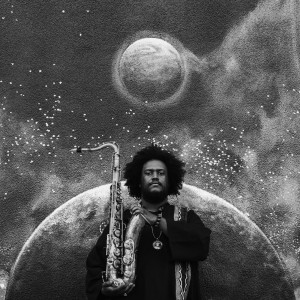
2.) Kamasi Washington, The Epic (Brainfeeder) – I suspect this will likely lead most of the lists my peers are assembling for the year’s best jazz albums. If the level of emotional investment shown in the previous entry hadn’t moved me more, I’d have been right along with them. This represents one of those occasions where you’re not only recognizing artistry on these three discs, but what this whole work represents: A heady return to the notion of orchestrated jazz as a source of emphatic, unmediated ecstasy; the difference here from the raw, searching energies summoned by John Coltrane, Su Ra, Rahsaan Roland Kirk and generations of “New Thing” acolytes and fellow travelers from the past being a wider accessibility to beat and tone. Because of Washington’s Los Angeles roots, I kept thinking about great bandleaders and mentors from that scene such as Gerald Wilson and Horace Tapscott whose charts roared, stomped and often sprawled the way these pieces do. But because of the conspicuous presence of Washington’s keening, quicksilver tenor sax on Kendrick Lamar’s To Pimp a Butterfly (which, if you were holding my feet to the fire, I’d be ready to declare the Album of the Year among all genres), I also recognize in this Epic’s conception Hip-Hop’s big, avid ears for blending rogue sounds. In this case: tiers of percussion propelling choirs of angels, street-hard horns breaking and merging at will and, once in a while, the familiar sound of a Hammond B-3 organ (summoned by keyboardist Brandon Coleman). It’s an achievement of such conspicuous heft and dimension that it makes you wonder if Washington’s trying to do too much at once. But just when you think those aforementioned energies are flagging, something, maybe a speed run by the bassist known as Thundercat, an extended comp by acoustic pianist Cameron Graves, an incisive lead vocal by Patrice Quinn or a fervent, reasonably straightforward take on “Clair de Lune” comes along to sustain the sense of the ground beneath one’s feet rumbling. It’s not that The Epic represents anything new under the sun. (It even revives “Cherokee,” for Charlie Ventura’s sake!) But it makes you aware of how long it’s been since jazz music made you want to reach for the sun, much less stare at it without fear.

3.) Maria Schneider Orchestra, The Thompson Fields (ArtistShare) – In a year when the overall level of jazz composing, arranging and orchestration challenged the adequacy of one’s supply of superlatives, it altogether figured that the redoubtable Schneider would put forth what, up to this still-relatively-early point in her brilliant career, could well be her masterpiece: An eight-piece suite, a decade or so in the making, evoking the outward graces and cherished epiphanies of the Minnesota prairie where she grew up. The music at first lulls you into thinking this handsomely packaged selection will be nothing but daydreams bathed in twilight pastels. (Not that there’s anything wrong with that.) But Schneider, whose ability to “play” an 18-piece orchestra has never before been as consummate or as confident as it is here, layers her pastoral vision with themes that thicken, recede and recharge with the mercurial impulses of Nature itself. After all, the weather isn’t always sunny and warm in one’s past, or, to be sure, in one’s present either. As with every great bandleader, Schneider allows her soloists near-collaborative space to enhance her vision, as in the cases of pianist Frank Kimbrough and guitarist Lage Lund replicating the tension between memory and reality on the title piece or Rich Perry’s inquisitive tenor sax summoning the persisting lure and unfulfilled yearning of “Home.” Too often, Schneider’s work as a composer-arranger incites comparisons to her inspirations/mentors Bob Brookmeyer and Gil Evans (about whom more later on this list). Now, she stands alone as a musical force capable of inspiring others. And if I were to make any comparisons at this point, it would be less towards other bandleaders than towards poets, to whose influence she has been paying homage on recent discs. In particular, her work on Thompson Fields reminds me of Robert Frost, another pastoralist whose darker, more ambivalent approaches to the passages of time and the seasons are often overlooked at first glance because of the elemental beauty of his tone. In both his case and hers, the subtler sense of unease aroused by their respective visions incline you to be more solicitous to the living things around you – and to treat their mysteries with respect and discretion.
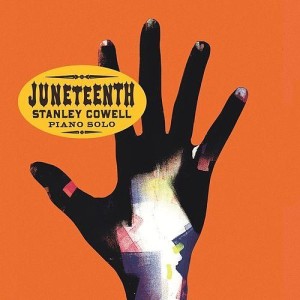
4.) Stanley Cowell, Juneteenth (Vision Fugitive) – Now 74, Cowell has been among the underappreciated stalwarts – and treasures – of American music. As with generations of jazz masters who found themselves marginalized in the cultural firmament even as they were becoming more autonomous as producers (he was one of the co-founders of the legendary Strata-East independent label in the seventies), Cowell spent most of the last several decades in academia while continuing to write, perform and record in a variety of settings as sideman and leader. He has also been one of the few pianists whose solo work is as textured and broadly realized as any combo’s repertoire. This unaccompanied performance of a work originally written for large ensemble commemorating the 150th anniversary of Emancipation, or at least its informal announcement in Texas in 1865, feels very much like a splendid gift to his abiding fans as well as a moving tribute to Cowell’s resilience. Because he shares a Toledo, Ohio birthplace with the great virtuoso Art Tatum, Cowell lays claim to the same faultless command of time and space that Tatum displayed in his own formidable body of solo recordings. He also weaves references to, and extensions upon, such disparate tunes as “The Battle Hymn of the Republic,” “Strange Fruit,” “Dixie” and other Americana redolent of the surging, shape-shifting referencing of Charles Mingus, only with a more probing and nuanced approach. With the issues animating the Civil War gaining more urgency in the years since Cowell was commissioned (in 2012) to compose this suite, “Juneteenth” feels at once both topical and enduring; news that, for better and worse, stays news.
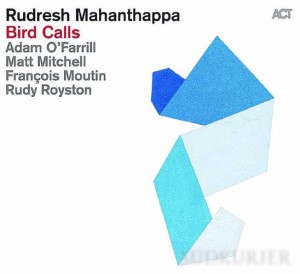
5.) Rudresh Mahanthappa, Bird Calls (ACT) – Modernism meets post-modernism and the former gets a “fly” face-lift it can grow with. Bird Calls is (far) less a “tribute album” to Charlie Parker than a young alto-sax daredevil’s attempt to connect with the divinities that made Parker soar into uncharted changes more than 70 years ago. Mahanthappa borrows or, more appropriately, “samples” themes, licks and riffs from the Parker canon and uses them as propellant for his own fire-breathing inventions. The familiar fanfare from the “Parker’s Mood,” for instance, is transfigured on “Talin is Thinking” into a incantation setting the table for a dirge drastically different, yet no less resonant or far-reaching than the original while “Maybe Later” cheekily elbows tropes from “Now’s the Time,” Parker’s slow-hand blues that midwifed both bebop and post-war rhythm-and-blues, and creates a bouncy number that swings more like an uptown rave than a downtown slide. The only thing that strongly evokes Parker throughout is the insurgent, turbo-charged drive to Make It New; and, in the process, to expand the possibilities for jazz to emerge from the chrysalis of its established traditions into something resembling full, unrestrained flight. Trumpeter Adam O’Farrill, pianist Matt Mitchell, bassist Francois Moutin and drummer Rudy Royston robustly share their leader’s commitment to this process and, you hope, other attempts at homage to past masters will take the hint.
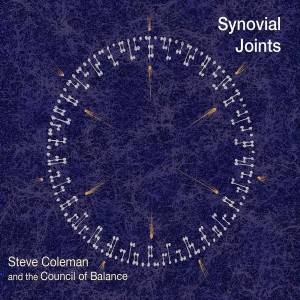
6.) Steve Coleman, Synovial Joints (PI) – “Doctor” Coleman continues the inquiry into the human body he commenced two years before with Functional Arrythmias (also on PI) and expands his bag of implements beyond those of his customary quintet of trumpeter Jonathan Finlayson, bassist Anthony Tidd, guitarist Miles Okasaki and, this time, drummer Marcus Gilmore to include a few more horns, a flute and piccolo, a string quartet, a pianist (David Bryant) and a singer (Jen Shyu) who join him on the eponymous four-part exploration/appreciation of, as Coleman writes in the liner notes, “the joints that bind the human musculoskeletal system [that] function as a means of connecting bones, binding tissue and provid[ing] various degrees of movement for our bodies.” Yes, I had the exact same thought: What a fine dance performance routine this music would serve. And the pull-pull interplay between strings and horns, bass lines and modes encourage one to imagine knees, elbows, legs and shoulders accommodating themselves to whatever groove gets transmitted as permission to ambulate. This disc doesn’t just go inside on “Acupuncture Openings” and “Celtic Cells” (not those in the body, but in medieval clusters of otherwise scattered visionaries. They also spend time in the Sahara desert on “Harmattan” and “Nomadic.” Wherever they go, Coleman’s ad-hoc musical aggregation sustains an engaging blend of the spontaneous and the deliberate that keeps mind and body in constant motion at delightfully varied speeds. It’s even fun if you’re just walking at a normal pace and this quirky music’s somehow playing – in more ways than one – through your ears.

7.) ) Ryan Truesdell Gil Evans Project, Lines of Color (ArtistShare) – Despite several albums of live performances by his big band released during the last 15 years of his life, so much of the reputation of arranger-bandleader-composer-enabler-of-the-cool Gil Evans (1912-1988) remains tethered to studio work, most especially whenever Miles Davis was involved. Thus, Ryan Truesdell, to whom so much is already owed for his Evans project’s award-winning 2012 debut. Centennial (also on ArtistShare), continues to restore Evans’ body of work and its myriad possibilities for revision. Here, he also helps re-establish the exuberant interaction of big band music with its audience — even if it’s sitting and drinking along, as opposed to dancing, which for all I know happened, too, at midtown Manhattan’s Jazz Standard, where these sessions were recorded. Take, just as an example, the project’s reiteration of Evans’ arrangement of Bix Biederbecke’s “Davenport Blues.” On the 1959 Pacific Jazz album, Great Jazz Standards, the piece is carried along by the late trumpeter Johnny Coles’ soft, cool and dry solo, this version’s rhythmic pulse is amplified by drummer Lewis Nash’s down-and-dirty beat and trumpeter Mat Jodrell’s flamboyantly vertical solo. I thought Evans’ 1965 version of “Greensleeves” would be a non-starter without Kenny Burrell’s guitar up front, but trombonist Marshall Gilkes busts the arrangement wide open. Because Truesdell is as much curator as orchestrator, he also uses such occasions for lesser-known or previously unrecorded Evans, notably “Avalon Town,” which he’d written during his mid-1940s apprenticeship with Claude Thornhill, during which he began tinkering with impressionism and modulated brass.
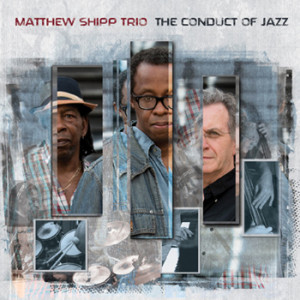
8.) Matthew Shipp Trio, The Conduct of Jazz (Thirsty Ear) –This is the small group album many of us have been waiting for from Wilmington’s Excitable Renegade. His knotty, multi-clustered attack on the piano is as relentless as ever with his themes and motifs rolling, tumbling and shifting direction with seemingly inexhaustible inventiveness. The first few bars of “Instinctive Touch” (along with the title itself) announces to the uninitiated how insistently he’s willing to stress test a motif until it breaks apart to reveal some promising new form of life. Yet it’s the title track that discloses something new to the mix; an exuberant drive that somehow seems more contained and yet more fluid and expansive. I’m going out on a limb by saying that it’s the addition of drummer Newton Taylor Baker to the tandem of Shipp and bassist Michael Bisio, whose solos likewise seem to have gained greater breadth and openness. Baker’s playing, both with the others and on its own, stretches and spreads out along with Shipp’s and Bisio’s, establishing keener interaction within the trip and helping Shipp’s compositions, whether as crypto-funky as “Blue Abyss,” or as discursive as “Primary Form” reach trajectories that challenge listeners without leaving them stranded or shortchanged. Mostly, it’s fun. Which is how jazz at whatever level of ambition or comprehension is supposed to “conduct” itself.
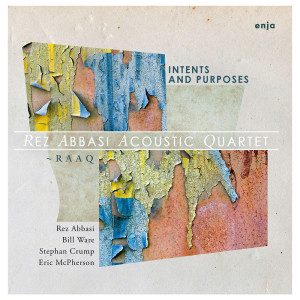
9.) Rez Abbasi Acoustic Quartet, Intents and Purposes (Enja) – The year’s notable contribution to the file marked, Discs-I-Couldn’t-Keep-Out-Of-My-Player-Without-Knowing-Exactly-Why is a disarming and surprisingly illuminating inquiry into the oft-discredited realm of what we used to know in the 1970s as jazz-rock fusion. Because so much of the music associated with that genre leaned on synthesizers, wah-wah pedals and other plug-in accessories, purists of all persuasions suspected both its players and its repertoire of coasting on waves of bombast and white noise. Abbasi’s guitars, assisted by Bill Ware’s vibes, Stephan Crump’s upright bass and Eric McPherson’s trap set, excise the bubbles and fuzz from one’s memories of Herbie Hancock’s “Butterfly,” Billy Cobham’s “Red Baron,” Chick Corea’s “Medieval Overture” and Pat Martino’s “Joyous Lake,” among others, to reveal their sinewy lyricism without muting their sounds or constricting their energies. These guys come on strong enough to make you check the cover again to make sure nobody’s packing a concealed amplifier.

10.) Heads of State, Search for Peace (Smoke Sessions) – This gathering of gray eminences – saxophonist Gary Bartz, pianist Larry Willis, bassist Buster Williams and drummer Al Foster – isn’t out to re-invent the wheel, or anything else. This is about as unassuming as “straight ahead” jazz gets these days, given its selection of standards, both familiar (“Impressions,” “Lotus Blossom,” “I Wish I Knew”) and not quite as well known that you don’t need to mention their composers’ names (Benny Carter’s “Summer Serenade,” Jackie McLean’s “Capuchin Swing”). There are also two pieces, “Soulstice” and “Uncle Bubba,” written by Bartz – and as masterly as the other esteemed “heads” are, it is Bartz to whom this album truly belongs and whose playing throughout is a clinic in lyricism, timing and tone. At 75, he is a living exemplar of the alto saxophone and all you have to do is listen to him lay out on something like “Crazy She Calls Me” to bask in the reflected glory of someone who knows exactly what to say, how to say it and where each bend and curve in a variation needs to go. Jazz doesn’t always have to change the world, or even rearrange the furniture in your head, to be great. Sometimes, all it needs is a rich, ripe and still evolving gift such as Bartz’s to remind you why you don’t really care what anybody else says about jazz music’s alleged “deterioration” or “demise.” If Bartz still believes, you should, too
HONORABLE MENTION
Fred Hersch, Solo (Palmetto)
Myra Melford, Snowy Egret (Enja)
Chris Potter Underground Orchestra, Imaginary Cities (ECM)
Erik Friedlander, Oscalypso (Skipstone)
Tigran Hamasyan, Luys I Luso (ECM)
Romain Collin, Press Enter (ACT)
Albert “Tootie” Heath, Ethan Iverson, Ben Street, Philadelphia Beat (Sunnyside)
Vijay Iyer Trio, Break Stuff (ECM)
Liberty Elfman, Radiate (PI)
BEST VOCAL: For One to Love HONORABLE MENTION: Cassandra Wilson, Coming Forth By Day (Legacy)
BEST LATIN ALBUM: Arturo O’ Farrill & the Afro-Latin Jazz Orchestra, Cuba: The Conversation Continues (Motema)
BEST REISSUE: Erroll Garner, The Complete Concert by the Sea (Legacy)
